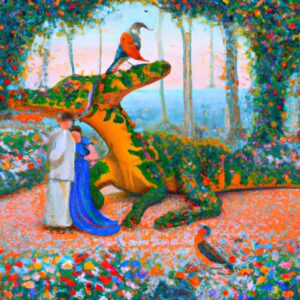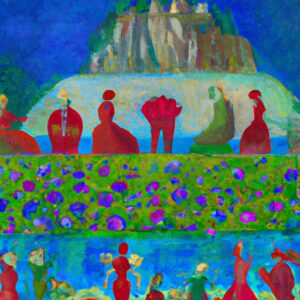What is an adjective?
An adjective might refer to different categories which you’ll find below together with some examples.
Usually, when you look up an adjective in a dictionary, you’ll first find its singular masculine version which ends either in -o or in -e.
On this list, you’ll only find the singular masculine versions of the adjectives.
We’ll explain later how to turn them feminine and plural.
- Age: giovane, vecchio
- Color: rosso, giallo, blu, verde
- Origin: italiano, congolese, argentino, iraniano
- Personality: antipatico, gentile, intelligente, simpatico
- Physical appearance: alto, basso, bello, carino
- Shape: rotondo, quadrato, triangolare
- Size: grande, piccolo, gigante, minuscolo
- Sound: acuto, alto, basso, grave
- Taste: acido, amaro, buono, delizioso
- Texture: morbido, rigido, soffice, duro
- Weather: caldo, freddo, grigio, nuvoloso
Types of adjectives
In Italian, adjectives usually agree in gender and number with the noun. This is reflected in their endings. This means they might end in –a, –e, –o, or –i, depending on the noun.
Have a look at the following sentence and try to spot the adjectives and their endings:
Le ragazze sono simpatiche ma i ragazzi sono un po’ strani. Luca però è carino. Anna invece è timida.
The girls are fun but the boys are a bit strange. Luca is nice. Anna, on the other side, is shy.
Some other adjectives don’t have a gender, which means they don’t agree in gender with the noun. These adjectives end in –e in the singular and in -i in the plural.
Here are some examples: interessante (interesting), grande (big), and gentile (nice).
Adjectives ending in -a and -o
As we already mentioned, the most common adjectives agree in number and gender with the noun.
Here’s a concise explanation of adjective endings depending on the noun they refer to:
- -a if they refer to singular feminine nouns
- -e if they refer to plural feminine nouns
- -o if they refer to singular masculine nouns
- -i if they refer to plural masculine nouns
Here are some examples for each ending:
Quella ragazza è simpatica.
That girl is nice.
Le sue bambine sono tranquille.
Her girls are quiet.
Il mare è profondo.
The sea is deep.
I suoi film sono stupendi.
Her movies are wonderful.
Gender-exclusive language
Italian can be gender-exclusive in some cases when it comes to adjectives. For instance, if you’re talking to 99 women and 1 man, you have to use the masculine.
In this case, you would say “Benvenuti!” (“Welcome!”).
However, you can always opt to make it more gender-inclusive by saying “Benvenuti e benvenute!”. This, of course, doesn’t include every single gender but it’s definitely more inclusive.
When an adjective refers to two nouns of different gender, it keeps its masculine ending. For example, “i ragazzi e le ragazze italiani” translates as “Italian boys and girls”.
Again, you have the option to make it more gender-inclusive and say “i ragazzi italiani e le ragazze italiane” (“Italian boys and Italian girls”).
You could also try to find ways to avoid making distinctions and find alternatives. This way, you would make the language less gender-exclusive, and relatively linguistically fairer.
Adjectives ending in -e
Some adjectives don’t make a distinction between feminine and masculine. These end in -e in the singular and in -i in the plural.
Here are some common ones in the singular:
- Affascinante: fascinating
- Disponibile: available
- Elegante: elegant
- Felice: happy
- Gentile: nice
- Grande: big
- Importante: important
- Intelligente: intelligent
- Interessante: interesting
- Particolare: particular
- Semplice: simple
- Triste: sad
Adjectives: common endings
There are also longer endings in Italian that are very common. They’ll help you recognize adjectives and use them correctly.
Here’s a list of common endings with some examples:
- –abile: indimenticabile (unforgettable)
- –ibile: incredibile (indredible)
- –evole: piacevole (pleasant)
- –oso: famoso (famous)
- –istico: artistico (artistic)
- –ale: formale (formal)
- –ico: simpatico (nice, as in fun)
- –are: solare (cheerful)
- –esco: pazzesco (crazy)
Practice with Quizlet
Here's a set of flashcards and quizzes to practice this grammar topic.Adjectives: examples
Now, you are an expert in Italian adjectives! You know all the theory. You just need some practice so here are some examples. Make sure you pay attention to their endings.
Mi piacciono i fiori gialli.
I like yellow flowers.
Quella casa è enorme.
That house is huge.
Quello specchio è rotondo.
That mirror is round.
Hai le mani troppo morbide!
You have such soft hands!
Tua nonna sembra molto giovane.
Your grandmother looks very young.
Loro sono tedesche.
They are German.
Questo cioccolato è troppo dolce.
This chocolate is too sweet.
La musica è troppo alta.
The music is too high.
Il cielo è un po’ nuvoloso.
The sky is a bit cloudy.
Laura è molto interessante.
Laura is very interesting.
Giacomo e Maurizio sono bassi.
Giacomo and Maurizio are short.
If you want to read more about Italian vocabulary, make sure you read the article about the 1000 most common words in Italian, if you haven’t done so yet!









